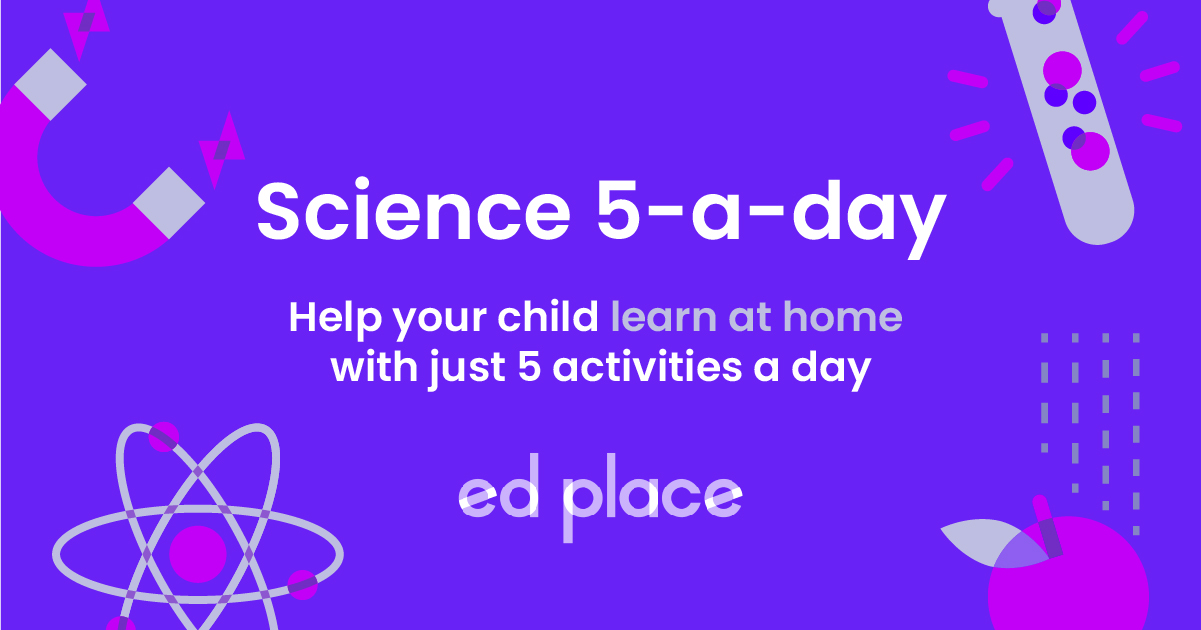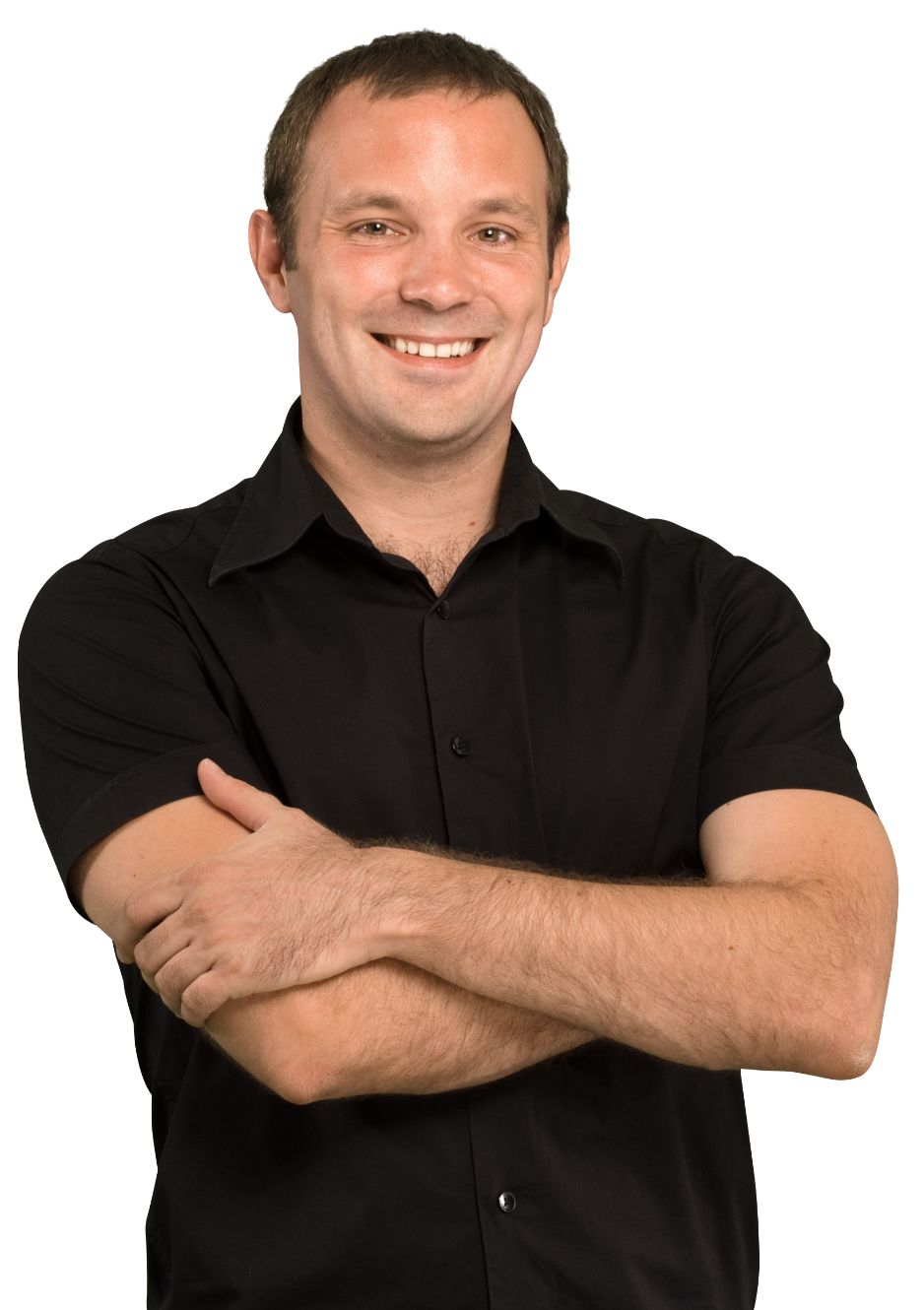
EdPlace's Key Stage 2 Home Learning Science Lesson: Food Chains
Looking for short lessons to keep your child engaged and learning? Our experienced team of teachers have created English, maths and science lessons for the home, so your child can learn no matter where they are. And, as all activities are self-marked, you really can encourage your child to be an independent learner.
Get them started on the lesson below and then jump into our teacher-created activities to practice what they've learnt. We've recommended five to ensure they feel secure in their knowledge - 5-a-day helps keeps the learning loss at bay (or so we think!).
Are they keen to start practising straight away? Head to the bottom of the page to find the activities.
Now...onto the lesson!
... and you thought consumers were shoppers and producers were TV execs!
Food chains – it isn’t simply “what eats what”! It’s about understanding that what happens when “what eats what” is energy being transferred from one organism to another. That’s the point of eating – to get energy! But, where does the energy come from? That’s a BIG question! It’s easy to get confused with food chains: different names for the organisms in the chain, arrows that have to point the right way, etc... So, why not use this blog to help your young scientists get their food chains linking together properly.
We're confident that if you follow the step-by-step approach below your child will be able to:
1) Understand how energy flows along a food chain
2) Describe the various organisms in the chain
3) Explain their understanding back to you, if they've really grasped it!
Step 1: What's it all about?
OK, so a food chain is a way of showing not just “what eats what” but what happens to the energy that everything needs in order to be able to live: where it comes from and where it goes to.
Of course, there are certain important words that we use to describe the members of any food chain. They’re not too difficult to learn, and pretty much make sense, but let’s start with those before we get stuck into how the food chain works.
Words we’ll come across regularly include:
Producer = always a plant – they are the ones that produce the energy that flows along the food chain.
Consumer = animals that do the eating (consuming) of the energy that came from the producers.
Predator = a consumer that eats other animals, e.g. an otter is a predator of fish.
Prey = a consumer that gets eaten, e.g. a worm is the prey of a blackbird.
Now, the words herbivore and carnivore fit in neatly here: a herbivore is a plant-eating consumer; a carnivore is an animal-eating consumer.
Step 2: How does it fit together?
OK, having got the words sorted, let’s see how it fits together. Key Point: food chains show where the energy is going!
Plants are the only organisms that have the amazing ability to swap sunlight energy into food energy. We animals can't eat sunlight! So, the food energy that the plants produce is what everything feeds on (and makes into animal bodies!).
Food chains show where the energy is going by using arrows:
So, this is what it looks like when a caterpillar eats your cabbages:
CABBAGE ![]() CATERPILLAR
CATERPILLAR
The arrow shows that the energy made by the cabbage leaf is transferred to the caterpillar. The caterpillar can use that energy it “stole” from the cabbage to move and grow!
The cabbage is the producer because it produces the energy, and the caterpillar is the consumer because it consumes that energy. Also, because it’s a plant-eating consumer, the caterpillar is a herbivore.
But, of course, it doesn’t stop there! Robins love to eat fat, juicy caterpillars (and “steal” their energy!), so now the food chain shows the energy transfer like this:
CABBAGE ![]() CATERPILLAR
CATERPILLAR ![]() ROBIN
ROBIN
You can see that the energy made by the cabbage (producer) has been moved to the caterpillar (consumer) and then the robin (consumer). The caterpillar is the prey of the robin. The robin is the predator of the caterpillar. The robin is a carnivore.
Step 3: Putting food chains into action!
So, time to put all this new stuff together. Remember, it’s all about energy! Imagine it’s a cold, snowy day and you’re out for a walk. You see a blackbird on the ground, looking for something to eat. It spots you and flies off uttering alarm calls. It needed energy to do that, energy that’s hard to find at the moment. All animals have to balance their energy input and output. In cold, snowy conditions, many small animals find food tough to track down and cannot afford to waste it.
So let’s look at energy flow through food chains. Remember, the food chain has to start with a plant. Why?
Only plants can provide energy for themselves and consumers by converting sunlight energy into food energy.
We use arrows to show the energy transfer, like this: PRODUCER ![]() CONSUMER (herbivore)
CONSUMER (herbivore) ![]() CONSUMER (carnivore)
CONSUMER (carnivore)
So, let’s look at a typical food chain in your local pond. Here are four organisms – let’s try to use the idea of energy production and transfer to sort them into their correct order in a food chain.
We have:
- stickleback (fish)
- heron (bird)
- pondweed (plant)
- water flea (insect)
We need to sort them into producer and consumers. Which one produces the energy for the food chain? Pondweed – as it’s a plant. That’ll be fed on by a herbivore – the first consumer in the list. What’s that likely to be? It's the water flea – a small aquatic insect that feeds on the pondweed.
So far we have: PONDWEED ![]() WATER FLEA
WATER FLEA
Is the water flea prey for another consumer? Yes, the stickleback is a fish that eats small aquatic insects – it’s a consumer that’s a predator (a carnivore).
Now we have: PONDWEED ![]() WATER FLEA
WATER FLEA ![]() STICKLEBACK
STICKLEBACK
Is that it? Does the stickleback get eaten by any other consumer (another predator?) Yes, the heron is a large bird that eats fish and frogs, etc. In a pond. The energy in the stickleback is transferred to the heron because it consumes the fish (it’s another carnivore). Because nothing catches the heron and eats it, the heron is called the top predator.
Can we put all this together into a food chain (let’s face it, it takes up a lot less room!)?
PONDWEED ![]() WATER FLEA
WATER FLEA ![]() STICKLEBACK
STICKLEBACK ![]() HERON
HERON
There, that’s the pond food chain, showing energy produced by the plant flowing through a series of consumers (herbivore to carnivores), ending at the top predator.
Step 4:
OK, time to check out whether this makes more sense – let’s start with a series of organisms. All you have to do is to decide whether it’s a:
- producer
- consumer (herbivore)
- consumer (carnivore)
- consumer (top predator)
Then we can try to construct a typical food chain, remembering that they show food energy flowing along them.
1) Oak leaf =
2) Roe deer =
3) Earthworm =
4) Dandelion =
5) Pond snail =
6) Sparrowhawk =
7) Woodlouse =
8) Water lily =
9) Robin =
10) Caterpillar =
Great! Now, try to decide which of the organisms in the list fits each of these descriptions.
11) The ______ is prey for the sparrowhawk.
12) The ______ produces food energy for the consumers in the pond.
13) The roe deer is a consumer of the _________.
14) The _______ is predator of the caterpillar.
15) One herbivore feeding on the water lily is the _______.
Finally, let’s try to put all that together into one of the possible food chains.
Place these organisms into their correct order in a food chain, using arrows to show the energy flowing through to each one:
Woodlouse, Sparrowhawk, Robin, Oak leaf
Step 5 - Let's put your food chain knowledge to the test while it's still fresh in your mind...
Now, you’ve had some practice, why not assign your child the following five activities in this order to test their understanding.
All activities are created by teachers and automatically marked. Plus, with an EdPlace subscription, we can automatically progress your child at a level tailored to their needs. Sending you progress reports along the way so you can track and measure progress, together - brilliant!
Activity 2 - Know Your Food Chains 2
Activity 3 - Who Eats What in Food Chains? 2
Answers
1) Producer
2) Consumer (herbivore)
3) Consumer (herbivore)
4) Producer
5) Consumer (herbivore)
6) Consumer (top predator)
7) Consumer (herbivore)
8) Producer
9) Consumer (carnivore)
10) Consumer (herbivore)
11) Robin
12) Water lily
13) Oak leaf or dandelion
14) Robin
15) Pond snail
16) Oak leaf ![]() Woodlouse
Woodlouse ![]() Robin
Robin ![]() Sparrowhawk
Sparrowhawk
Keep going! Looking for more activities, different subjects or year groups?
Click the button below to view the EdPlace English, maths, science and 11+ activity library








